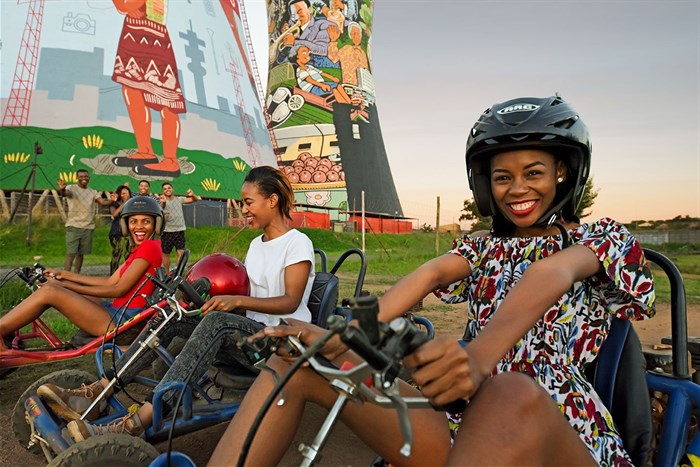
Top stories



Here are five to get you started.
Considered the most Insta-worthy spot in South Africa by Big 7, the diving board rock on Table Mountain is worth the gruelling five-hour hike up the Kasteelpoort route to get there. The flat granite rock juts out of the mountainside and allows for fantastic views and photos. Best of all, it is free. Just don’t look down. It is a good 900-metre drop.
The Orlando Towers in Soweto used to be a coal-fired power station. Now the 33-storey behemoths have become one of the most iconic landmarks in Soweto. It is the site of the world's first bungee jump between two cooling towers.

At the base of the towers is Chaf Pozi, a shisa nyama restaurant known for its authentic local foods, beer and township music. The entire experience is tailored for your pocket and will give you the break you need.
South Africa has a plethora of beautiful places to explore, and none is more stunning than the dramatic cliff face in the northern part of the Drakensberg known as The Amphitheatre. Looming majestically over the Royal Natal National Park in KwaZulu-Natal, it measures five kilometres in length and 1.2 kilometres high. The amphitheatre is home to the Tugela Falls, the second-highest waterfall in the world that drops 948 metres to the bottom.
Blyde River Canyon is the largest Green Canyon in the world, stretching over 26 kilometres and with a depth of 800-metres. Located in Mpumalanga on the northern parts of the Drakensberg Escarpment, the canyon got its name from the Dutch word for “happy”. it was named this by the Voortrekkers in 1844 when Hendrik Potgieter and others returned safely from Delagoa Bay. The canyon includes Instagrammable spots such as:
The Bo-Kaap epitomises all that is colourful and authentic about Cape Town’s people. Tucked into the fold of Signal Hill on the fringe of the city centre, the Bo-Kaap’s cobblestoned streets and vibrantly coloured Cape Dutch and Georgian homes echo the history of Cape Malay population, which dates back to the 1760s, when they were brought over from Malaysia, Indonesia and rest of Africa as slaves.